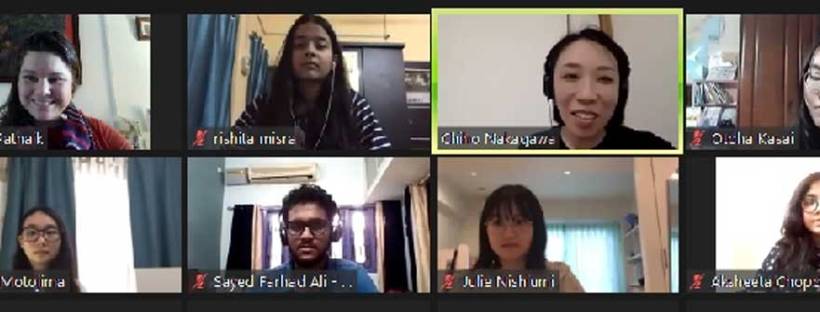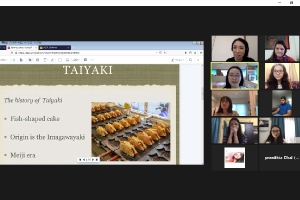SAI International has been actively working with various partner schools from across the globe to promote understanding and respect for each other’s culture and nurture students towards becoming global citizens. It exposes teachers and students to diverse learning and educational frameworks. The effort for the same continues even during the period of lockdown.
The school has been actively conducting virtual meets with Jr & Sr High School of Kogakuin University, Tokyo Japan since Thursday April 16, 2020, to understand the lifestyle, practices, education, culture and many more of each other’s countries.
In continuation with the collaborative activities with the Japan School, the virtual meet on Friday, July 24, 2020 was held on the topic, ‘Street foods for Japan and India’. The session commenced with the weekly update on the COVID 19 status in each other’s country. Students mentioned that the coronavirus cases are rising in both countries and the situation is getting worse by the day. The Japanese students informed that they have returned to school and are attending classes.
SAIoneers presented different street foods of India including chole bhature, dahi bara, vada pav, dosa, pani puri, and tandoori chicken. A live demo was given on how to prepare pani puri.
The first food the Japanese students discussed was takoyaki or “octopus balls” which is a ball-shaped Japanese snack or appetizer made of a wheat flour-based batter and cooked in a special molded pan. They also spoke about kakigōri, a Japanese shaved ice dessert flavoured with syrup and a sweetener, often condensed milk. Several more food items were mentioned including amezaiku which has been made in Japan for over 400 years and is a Japanese candy craft artistry. An artist takes multi-colored mizuame and, using their hands and other tools such as tweezers and scissors, creates a sculpture. Each candy sculpture has to be completed in less than three minutes, before the melted candy cools down. These candies are usually in the shape of fish or sea creatures. Sushi was also present, this dish of wrapped rice and raw fish is served all over the world.
During the discussion, students of both schools noticed that kakigore, that is shaved ice with flavouring on it, was similar to a dish served in India, called chuski. The session was highly interactive and informative.
Partnerships between schools in different countries offer a foundation for the growth of a school’s syllabus and subject areas incorporating a wider global input and international perceptions. During the meetings participating students foster international dialogues, collaborative virtual classes truly develop a common understanding between the youth of today.











